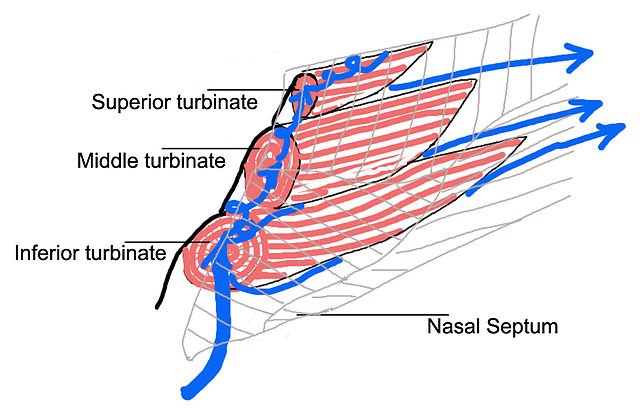In anatomy, a nasal concha, also called a nasal turbinate or turbinal, is a long, narrow, curled shelf of bone that protrudes into the breathing passage of the nose in humans and various other animals. The conchae are shaped like an elongated seashell, which gave them their name. A concha is any of the scrolled spongy bones of the nasal passages in vertebrates.
Nasal concha
The horse breathes through nares (nostrils) which expand during exercise. The nasal passages have two turbinates on either side which increase the surface area to which air is exposed. 1 : Concha nasalis dorsalis 2 : Concha nasalis media 3 : Concha nasalis ventralis
Right nasal airway passage
Nasal conchae
A nose is a protuberance in vertebrates that houses the nostrils, or nares, which receive and expel air for respiration alongside the mouth. Behind the nose are the olfactory mucosa and the sinuses. Behind the nasal cavity, air next passes through the pharynx, shared with the digestive system, and then into the rest of the respiratory system. In humans, the nose is located centrally on the face and serves as an alternative respiratory passage especially during suckling for infants.
The protruding nose that is completely separate from the mouth part is a characteristic found only in therian mammals. It has been theorized that this unique mammalian nose evolved from the anterior part of the upper jaw of the reptilian-like ancestors (synapsids).
3D medical animation still shot depicting a human nose
The nose of a tapir
Elephants have prehensile noses.







